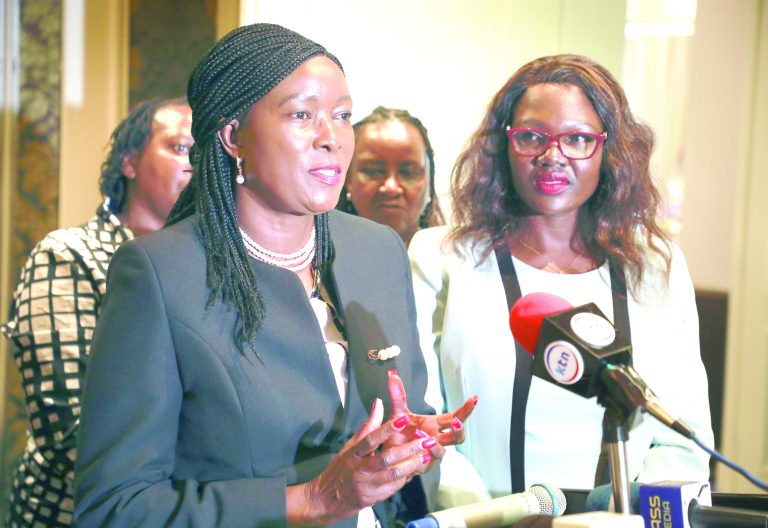UNICEF on why Kenya is unsafe for children

Kenya has been termed an unsafe country for raising children, with statistics showing that the government has neglected their welfare, leaving them more vulnerable to abuse.
The government has also been faulted for allocating a paltry Sh3 billion, an equivalent of 0.09 per cent of its 2022/23 financial year budget of Sh3.3 trillion.
Consequently, due to the underfunding, the department responsible for children’s welfare has been unable to implement children’s welfare programmes, including the hiring of social workers.
A report dubbed ‘The State of Children Protection Workforce in Kenya’ showed that four social service workers are assigned to serve 100,000 children, which is below the recommended rate of eight officers.
Parents will be shocked to learn that in 39 counties, the government has assigned less than four social service workers per 100,000 children.
Tharaka Nithi, Nairobi, and Kirinyaga counties have at least four social workers each, with a slightly higher number in Machakos, Nyamira and Kiambu.
Staff burnout
Lamu and Nyeri are the safest counties for the upbringing of children, with each county having at least five social workers serving in a population of 100,000 children.
On the other hand, 12 counties have less than two social service workers serving the same population of children.
They include Garissa with just one official in the entire county, Mandera, Meru, Kwale, Turkana, Kitui, Bungoma, Kilifi, Kakamega, Narok, Trans Nzoia and West Pokot.
Data from the Department of Children’s Services (DCS) compiled in 2023 revealed that it has authorised a total of 1,392 officials of different cadres, but only 729 were employed, which is half of the total workforce.
DCS showed that the 30 positions of both Senior Assistant and Assistant children officers remain vacant, prompting the available staff to traverse up to three sub-counties to address issues affecting children.
“Many (social service) staff don’t have social work degrees, and they lack induction training and continuing professional development. They also handle high caseloads and a lack of supportive supervision, resulting in burnout. Children are not getting the services they need,” the report released by UNICEF indicated.
One of the researchers, Conrad Barberton, stressed that DCS must focus on hiring professionals with Social Studies degrees and not those with equivalent qualifications, just like in other sectors, such as health, where one has to be a trained doctor to practice medicine.
“Let’s recognise that to address child protection issues, you need a professional. And that professional is a social worker. Social media is presenting all sorts of challenges, especially with teenagers. And social workers need to keep up to date,” Barberton stated.
To underscore the heavy cost that the taxpayer bears as a result of the under-capacitated social service sector, in 2021, the government spent Sh588.2 billion, an equivalent of 4.89 per cent of the GDP, on violence against children.
Kenya National Bureau of Statistics data showed that 46.7 per cent of children in Kenya experience some form of violence prior to the age of 18 years. Further, an estimated 23 per cent of girls and 6.4 per cent of boys experience sexual violence, while 48 per cent of boys and 30 per cent of girls experience physical violence.
An estimated 22.9 per cent of Kenyan girls below 18 years enter child marriage, while teen pregnancy is at 14.8 per cent of girls 15-19 years
In the report, UNICEF said children aged five to 19 years who have faced sexual abuse and bullying are resulting in an increasing health burden, even as three out of 10 children below 18 years are engaged in child labour.
The United Nations children’s wellbeing agency warned that with an understaffed children’s welfare sector, the country will witness higher incidences and under-reporting of violence, abuse and neglect of children. Additionally, despite the government’s efforts to invest in education systems, with the overstretched workforce, the schools are going to witness high rates of absenteeism and dropouts.
Priority areas
Newly appointed Principal Secretary for the Department for Children Welfare Services, Carren Agengo, said that the report had highlighted key priority areas that her agency will escalate to parliament and the National Treasury to foster the protection of Kenyan children.
“This report is talking about capacity building, and one of the areas that the social service workforce requires is training. We shall look at it and see what area we can use, work with our training institutions, our universities, to ensure that the capacity building of our workforce is enhanced,” Agengo added.
Highlighting that many Kenyans are not aware of children’s issues, Agengo said that her priority will be to create a communication strategy to inform the public on government efforts to protect the children, and they can support it.
The PS hinted that the government is on the verge of operationalising the Child Welfare Fund established by the Children’s Act after the National Treasury released a concept for the enactment of the fund.
Chief of Child Protection at UNICEF Kenya, Eri Mathers, said many children are not receiving adequate services when their rights are violated due to the scarcity of the capacity of the child protection workforce in the country.
To strengthen the social service workforce, UNICEF recommended at least two social service workers per sub-county, and 39 staff be supported by children protection volunteers per 100,000 children.












